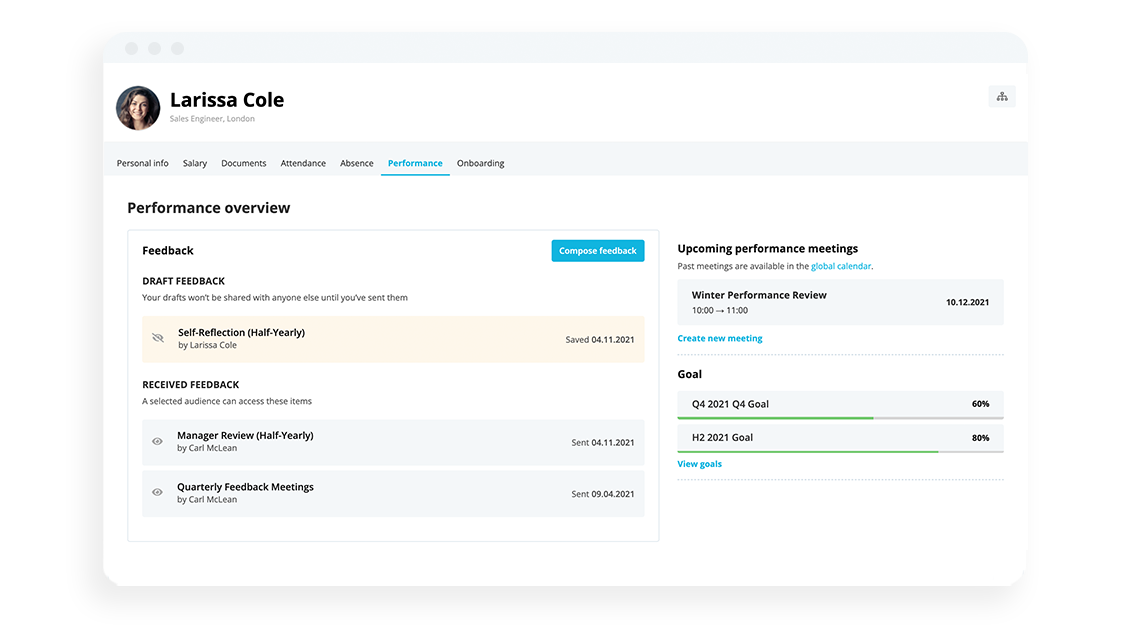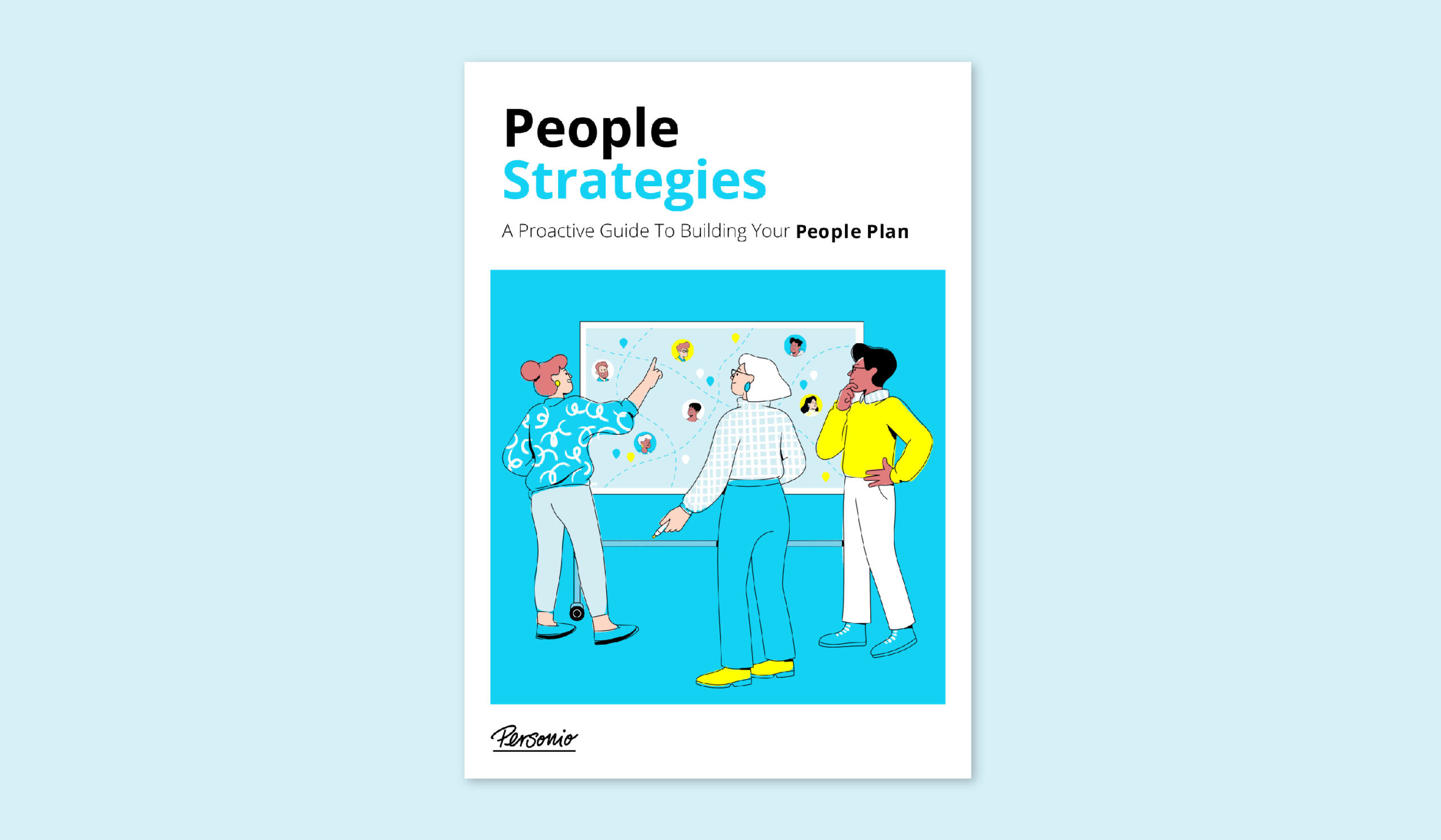Is talent management the key to optimizing your workforce? Many would say yes, and that it can help close rapidly-increasing skills gaps across your organization. But, it needs to be done correctly.
Talent management can be an incredibly helpful process. When done correctly, it can attract, develop, and retain the best employees. And, it can do so without fear or risk of consequences.
What’s on the horizon for HR? Find out by downloading our study today.
Contents
What Is Talent Management?
The Three Central Talent Management Disciplines
A Successful Talent Management Strategy in Just Three Steps
Treat Talent Management With Care
What Is Talent Management?
Talent management is a holistic viewpoint of every HR process. If we think of everything all together, it is the ways in which HR can attract, onboard, develop, motivate, and, ultimately, retain the best employees. It’s about making employees more productive and more satisfied with their work, so the organization benefits.
Talent management is, in a sense, a ‘child’ of HR. It is younger, far less experienced, but much more innovative and not so set in its ways. While both disciplines are about managing employees, talent management is much more focused on filling key positions in companies.
Talent management is a holistic corporate strategy that aims to attract, develop, motivate, and retain high-performing employees over the long term.
What Are The Key Components Of Talent Management?
Talent management is made up of many components, but the most important are the following:
- Talent management is strategically oriented and geared toward overarching corporate objectives. HR, on the other hand, is more concerned with operational and day-to-day work.
- Talent management concentrates on individual high achievers while HR encompasses the entire workforce. The HR department gathers important information, e.g. from performance analyses, feedback meetings, and exit interviews. This way, the Talent Management Team can identify training needs and draw up succession plans.
- Talent management concerns itself with improving company performance. Processes from core HR areas are harnessed to achieve this – from the recruitment process to employee retention.
The disciplines go largely hand in hand, often overlap, and thus complicate a universal definition of talent management. In addition, the term has only existed since 1998, meaning that talent management is still in a state of flux.
However, the key tasks and core areas of talent management are quite clear.
The Three Central Talent Management Disciplines
1. Finding Talent
To track down potential talent, talent acquisition managers follow two lines of inquiry.
Externally, the usual recruitment initiatives are set in motion. Job advertisements containing a clear requirements profile or analyses of applicant potential. Employer branding is also relevant, as talent managers want to attract more and more interesting and qualified candidates.
That said, young and talented individuals could also be found within the company itself. Performance reviews and appraisals are good ways to identify them.
Download our complimentary performance review templates right here.
2. Supporting Talent
This is where talent development initiatives come into play. Training and development can be offered in order to develop employees into outstanding specialists and managers.
An important element of this is professional development. Developing your talent is, of course, crucial to supporting your talent. This is because you’re helping them get better and better at what they do. Click here for our full guide to professional development right now.
This could include concrete target agreements or airtight development plans. Mentoring can also be part of a development program here (click here to read more about performance management cycles and why they matter for employee development).
Develop Your Top Talent Using Personio
Help employees realize their potential – for lower employee turnover and higher motivation:
- Make feedback meetings transparent and efficient.
- Record performance goals and measure progress.
- Automate performance cycles so dates are never missed
3. Retaining Talent
This task is the ultimate discipline of human resources management. Employee loyalty only goes so far nowadays, but a few talent relationship management initiatives can help. In order for a company’s top talents to feel that they are in good hands over the long term, the following is required:
- An appreciative corporate and management culture and working environment.
- A close match between personal goals and corporate goals.
- Development opportunities for employees.
- Rewards for good performance, such as financial incentives or promotions.
Talent management is now one of the most important HR management disciplines. At least in theory. In a survey conducted by the market research institute Statista in 2018, only 20% of managers saw talent management as an HR priority. Talent management has enormous potential – when used correctly.
How Can You Improve Your Talent Management?
Only 5% of company employees who were surveyed in 2018 as part of a McKinsey study reported effective talent management processes and a noticeable increase in company revenue.
Of this 5%, however, 99% said they had outperformed all competitors.
The best results are achieved by companies that …
- Deploy talented individuals to projects and teams based on the skills required.
- Have HR Teams specifically to ensure positive employee experiences.
- Employ HR Teams who have the time to work strategically.
So, the secret recipe for a successful talent management strategy is to be agile, positive, and strategic:
1. Agile
How do you quickly assign talented individuals to strategically prioritized projects? You do it by making talent management a managerial task. Make sure you have management backing at the highest level. This way, all managers are kept in the loop on your strategy.
2. Positive
Happy employees not only perform better but are likely to stay longer, too. Ensure that employees feel they are in good hands from the first point of contact in the application process. This could include targeted talent relationship management initiatives, such as regular feedback meetings, to help. Give employees career prospects and development opportunities that suit them. Most of all, make your team feel valued.
3. Strategic
A strategic approach is essential. Before simply hiring people, you should set precise goals and ask yourself the following:
- What are the company’s objectives? Which skills are needed to achieve these goals? What are the key positions?
- Do we already have talents in the company, and where are their skill gaps?
- What processes and initiatives do we need to set in motion in order to attract employees with the necessary qualities? How can we distribute the roles here? Does anything need to change?
- What methods can we use to objectively determine whether a candidate has the desired characteristics?
- Are there existing talent management tools that we can use to attract, support, and retain employees in a targeted manner? What could cause employees to leave the company?
- How do we measure whether our initiatives are successful? Which indicators are relevant for us?
Eight Top Talent Management Practices
- Employer branding: Strengthen your employer brand, for example through your social media channels or with the help of likable videos and amusing campaigns. Download our eBook to learn more.
- Candidate experience: Ensure a positive applicant experience – good reviews on employer portals are like gold.
- Referral programs: Talented individuals tend to know each other. So, introduce a program where employees can recommend friends and acquaintances for jobs.
- Onboarding: As well as providing new employees with important information on the company and their position, give them an understanding of the corporate culture. This is quite simple with Personio’s onboarding software.
- Employee engagement: Establish a feedback culture in the company and find out what truly moves your employees.
- Development: Provide training programs to make sure your employees develop professionally and personally.
- Performance management: Measure employee performance, e.g. with Personio’s HR analytics.
- Succession planning: Build a talent pipeline with promising candidates to quickly close any emerging skill gaps.
What Are Possible Problems Concerning Talent Management?
While being hopelessly underappreciated so far, talent management is the key factor that can help companies stay competitive over the long term. This is especially true given the changing environment that is the labor market.
This does not mean that HR managers suddenly have to divide their employees into “has potential” and “solidly mediocre.” In fact, it’s quite the opposite.
The impact of this kind of subdivision on employees has not yet been scientifically investigated. However, research results from other disciplines suggest the ‘Pygmalion effect’ is a risk. People can develop into the images others have of them – both positive and negative.
To ensure that a large part of your team does not fall short of what it could achieve, you should also maximize preexisting potential. Create a business environment in which your entire workforce can reach its potential. This is how a culture of excellence develops organically and meaningfully.
Performance Management
For Talent Management






